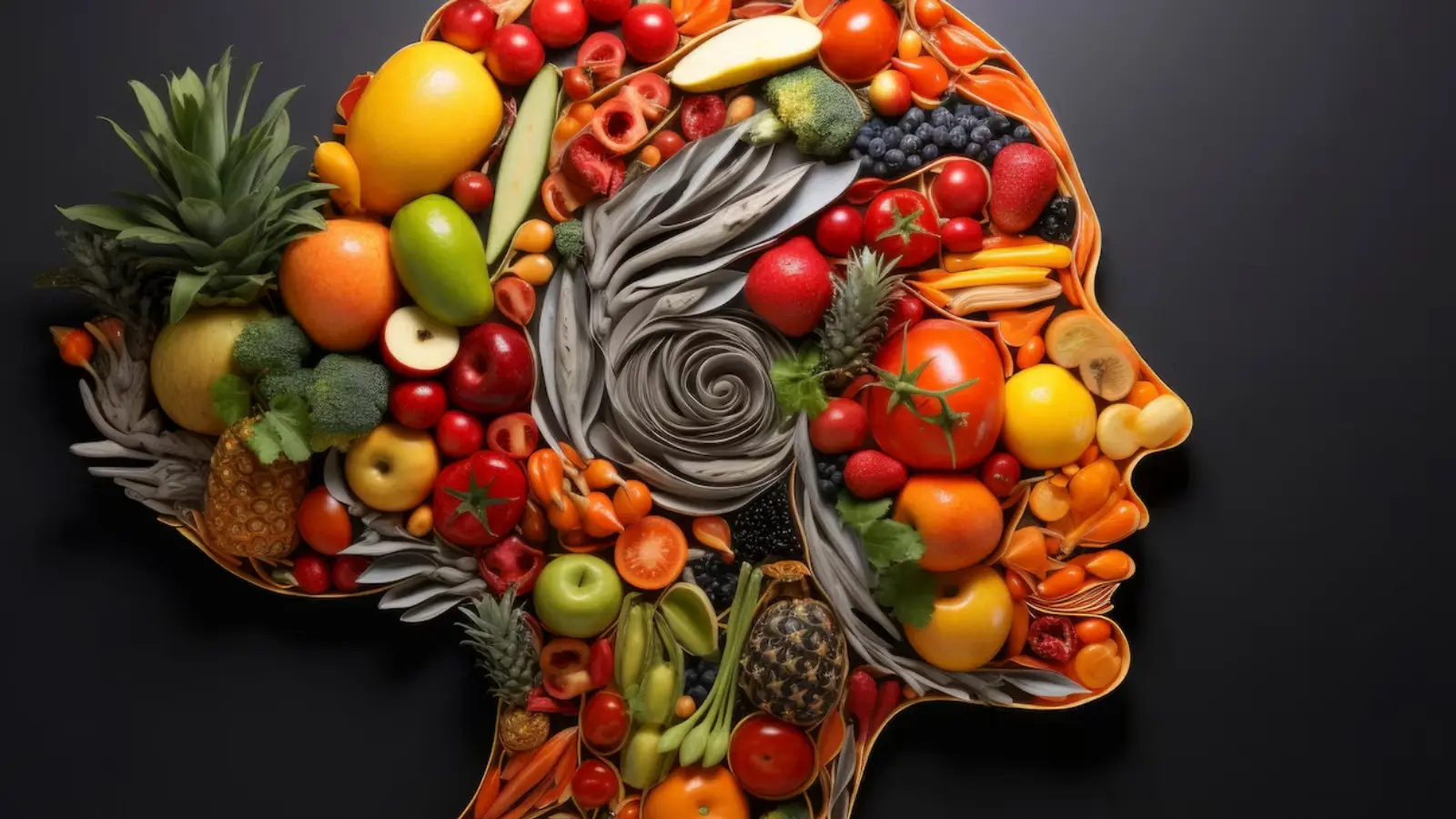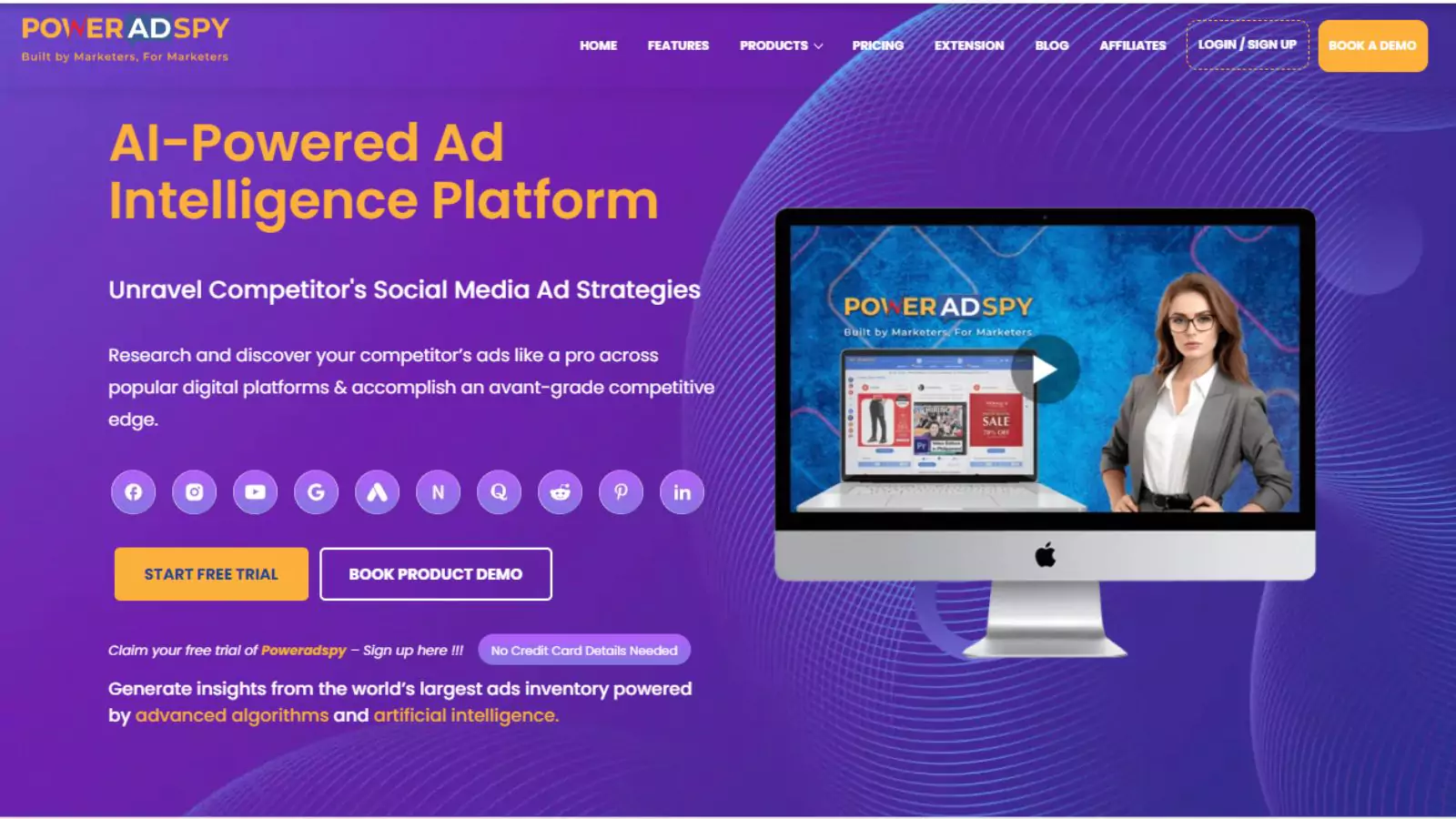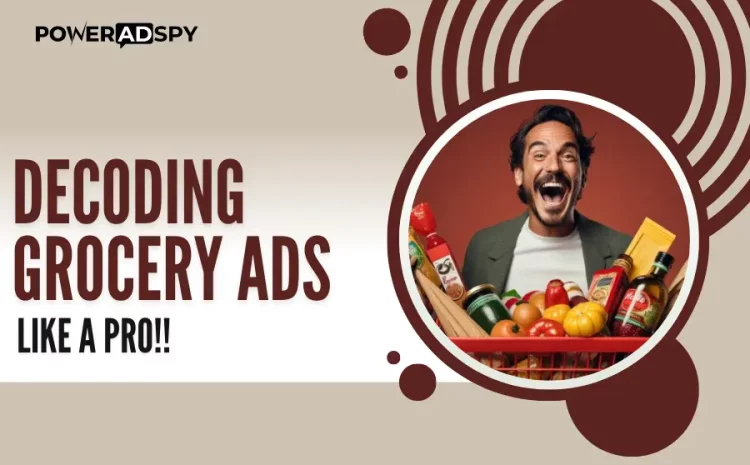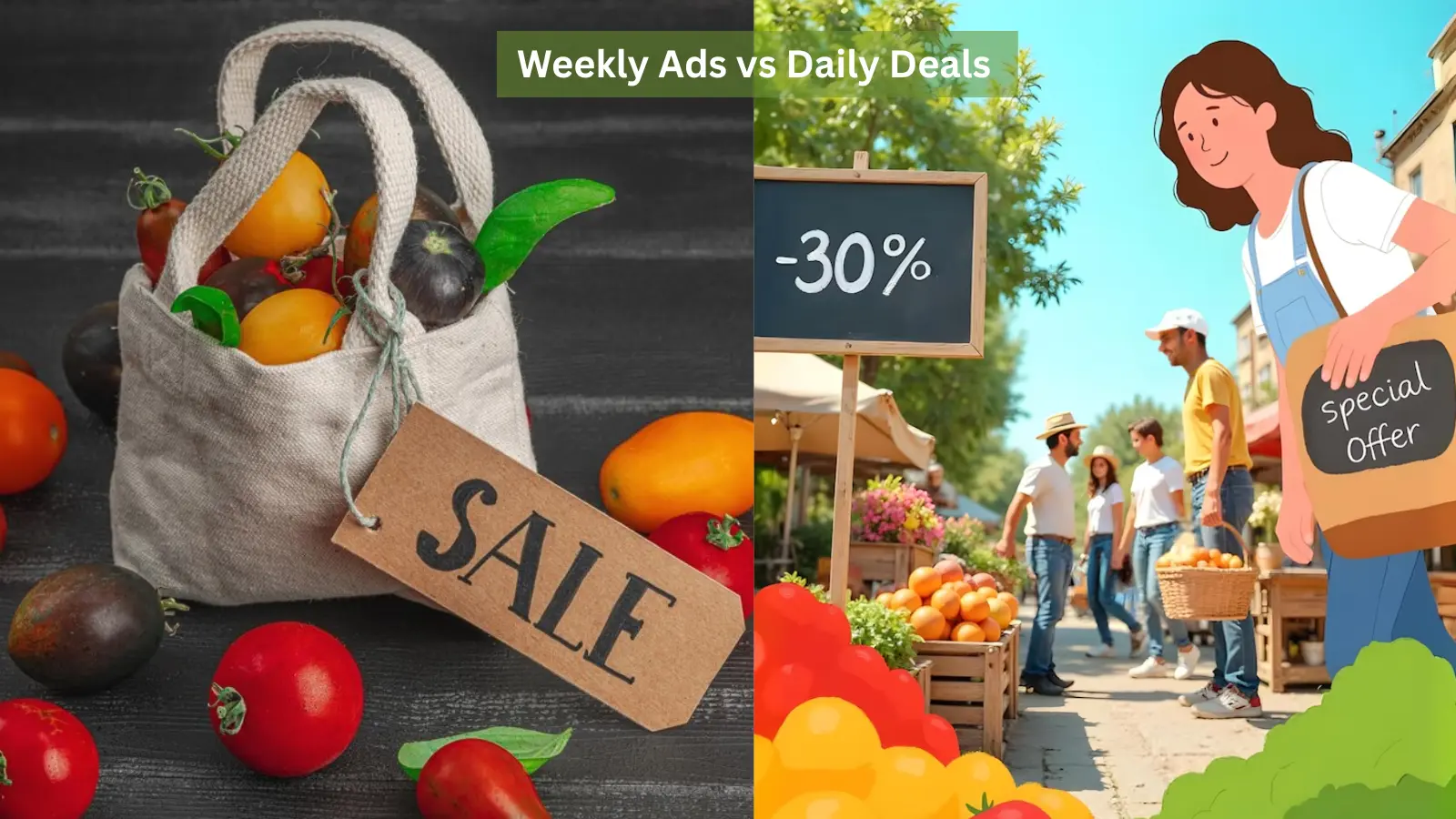How To Decode Grocery Ads Like A Pro?
Whether you’re a shopper who plans every purchase down to the penny or a marketer trying to craft a promotion that works, understanding how these ads work is a major advantage.
Gone are the days when grocery ads were just paper flyers stuffed in your mailbox. These days, they’re smarter, faster, and a lot more strategic. From personalized mobile notifications to location-based promotions, grocery ads have evolved into a direct line of communication between stores and shoppers.
But there’s more going on than just discounts and BOGO deals. Behind each ad is a mix of psychology, timing, and data, designed to catch your attention and influence your choices. And if you know how to spot the patterns, you can use these ads to your benefit, whether that means scoring better deals or creating more effective campaigns.
In a hurry? Listen to the blog instead!
What Are Grocery Ads?

Grocery ads are marketing tools used by supermarkets, grocery chains, and local retailers to draw in shoppers. These advertisements showcase special discounts, seasonal promotions, loyalty program perks, and new product introductions. While they were once mainly distributed through newspapers and printed flyers, today’s grocery ads have expanded into the digital space, appearing on mobile apps, store websites, social media marketing ads platforms, and via email.
The main aim of these ads is to boost store visits and encourage customers to spend more. By promoting limited-time offers and value-packed bundles, they create a sense of urgency that drives quick decision-making. For marketers, grocery ads not only help increase sales but also play a key role in strengthening brand presence and customer loyalty.
The Rise Of Digital Grocery Ads
As more people rely on their phones and shop online, digital grocery ads have taken center stage. Instead of one-size-fits-all promotions, retailers now use smart algorithms and shopper data to tailor ads to each person’s habits and preferences. That kind of personalization doesn’t just catch attention, it often leads to more clicks and actual purchases.
One of the biggest advantages of digital ads over old-school paper flyers is measurability. Marketers can see in real time how well an ad is performing, how many people clicked on it, viewed it, or took action, which means they can tweak and improve things on the fly. Plus, digital platforms allow for interactive and up-to-the-minute content, like countdowns for flash sales or live inventory updates, features you simply can’t get with print.
Big players like Amazon Fresh and Walmart Grocery have raised the bar. Their platforms show how digital grocery ads can guide a shopper from discovering a deal to completing a purchase, making the whole process fast, smooth, and convenient.
Case Study: How A Local Chain Boosted Sales With Grocery Ad
Take Harvest Market, a regional grocery chain in the Midwest that found itself struggling to keep up with larger competitors. Instead of trying to outspend the big-box stores, they decided to play smarter by going local and personal.
Using data gathered from their loyalty card program, Harvest Market broke down their customer base into segments and started sending out personalized email campaigns. These emails featured digital ads tailored to each shopper’s previous buying habits, making the promotions feel relevant and timely.
They also paid close attention to timing. By sending out their weekly offers on Friday evenings, just when people start thinking about weekend shopping, they saw foot traffic increase by 25% over just three months. To take things further, they used geofencing to send deal alerts directly to customers’ phones when they were near one of their store locations.
So, what changed the game? A mix of smart targeting, personalized communication, and well-timed digital outreach. This example shows just how effective grocery ads can be when they’re powered by data and delivered with purpose.
Read more:
How To Target Weekly Ads: Everything You Need To Know
7 Steps To Create Powerful Campaign With Shopping Ads Spy Tool
What Do You Mean By Weekly Grocery Ads?

Weekly grocery ads are recurring promotional materials released once every week, often on Wednesdays or Sundays, to showcase the best deals available for the upcoming days. These ads typically include discounts on produce, meats, pantry items, and household essentials.
What makes these weekly ads effective is their consistency. Shoppers know exactly when to expect them, and many build their routines, like payday budgeting or weekend meal planning, around those release days. That predictability creates a rhythm, making weekly ads a dependable way to stay connected with customers.
Unlike occasional or seasonal promotions, weekly ads bring in a steady stream of foot traffic. For most retailers, they’re a key piece of the marketing puzzle, helping keep the aisles busy and the carts full all week long
What Is The Psychology Behind Grocery Ads?

Grocery ads might look simple, but there’s a lot of psychology behind them. Stores carefully design these ads to catch your eye and gently push you toward buying something. For example, you’ll often see red and yellow in ads, those colors aren’t random. They’re chosen because they grab attention and even make you feel a little hungrier.
Phrases like “Buy One, Get One Free” or “Only for a limited time” are there to make you feel like you need to act fast before the deal is gone. And when you see tags like “customer favorite” or “best seller,” that’s social proof; it’s meant to make you feel more confident about your choice because others are buying it too.
Even where things are placed matters. In both printed flyers and online ads, the best spots, like the center or eye-level areas, are saved for items the store wants to sell, often because they bring in more profit or need to move quickly.
Knowing these little tricks can help you shop smarter. And if you’re a marketer, using them well can make your ads way more effective.
Why Grocery Store Ads Still Matter Today?

Even though digital marketing is everywhere now, old-school grocery store ads still play an important role, especially for people who aren’t online as much. For example, many seniors and families on a budget still like using printed ads that they can hold, read, and plan their shopping around.
In-store signs, special shelf labels, and displays at the ends of aisles also help shoppers make decisions right there in the store. These tools work well with digital ads, repeating the same deals you might’ve already seen online.
It all adds up to a shopping ads experience that hits from different angles. You might spot a deal on social media, get a reminder in your inbox, and then see a sign in the store that helps you decide to buy. That’s how smart marketing works across both digital and in-person channels.
How Technology Makes Grocery Ads Smarter?

Technology has changed the game when it comes to grocery advertising. Today, stores use advanced tools to see what their competitors are doing, test different ad styles, and track how well each ad is working. This means less guessing and better results.
Thanks to AI, retailers can figure out which deals shoppers like the most. Machine learning even helps predict the best time and place to show an ad based on how people usually shop.
The outcome? Grocery ads that are more personal, better timed, and more likely to lead to a sale
Personalized Ads And the Rise Of “Grocery Ads Near Me”
The way people search for deals has changed. More shoppers are now typing things like “grocery ads near me” into their phones to find local offers. This means stores need to focus on location-based ads that speak directly to nearby customers.
By using tools like local SEO and geo-targeting, grocery stores can create ads that match the needs of each neighbourhood, even adjusting for things like the weather or local traditions. When ads feel more personal and relevant, they’re much more likely to bring people into the store or drive online orders.
In short, when businesses focus on where their customers are and what they care about, even a simple search like “grocery ads near me” can turn into a strong reason to shop.
Weekly Ads vs Daily Deals: Which Is More Effective?
Weekly grocery ads help shoppers plan. They’re perfect for regular items and bulk buys—things you can stock up on for the week. On the other side, daily deals create a sense of urgency. These quick, limited-time offers are great for last-minute purchases or moving extra stock fast.
Each type of ad has its purpose. Weekly ads bring consistency, while daily deals add excitement.
The smartest approach? Use both. Stores that mix steady weekly deals with surprise daily offers can attract both careful planners and shoppers who love a good spontaneous bargain.
Utilizing Ad Spy Tools To Stay Ahead of the Competition: PowerAdSpy

In grocery marketing, knowing what your competitors are up to is important. Tools like PowerAdSpy is one of the most powerful ad intelligence tool that let marketers track other brands’ ads in real time, showing which promotions are working well in different areas and for different types of shoppers.
By seeing what others are doing, whether it’s the wording they use, the types of deals they run, or where they place their ads, you can fine-tune your strategy and avoid repeating the same ideas. These tools also help test what works best, so you can improve your ads without having to start from scratch.
With the right tools, keeping up with the competition becomes a lot simpler and more effective.
The features of PowerAdSpy are as follows-
1. Find Ads Using Specific or Related Keywords
This helpful social ad analysis tool lets you search for ads using exact or similar keywords. You can easily explore a range of results, from very specific to more general, to get a better understanding of what’s working.
2. Location-Based Targeting Made Easy
PowerAdSpy has access to millions of ads, making it easy to see exactly where your competitors are targeting their audiences. This helps you find the right locations and people who are more likely to be interested in what you offer.
3. Insights Based on Real Engagement
PowerAdSpy gives you detailed insights into how people are interacting with social ads. By looking at likes, shares, and comments, you can quickly spot which ads are truly connecting with your audience and standing out in your niche.
The Future Of Grocery Ads
Grocery advertising is changing fast, and the future looks exciting. With AI and automation, creating and sharing ads will become even smarter and more efficient. We may soon see grocery ads through voice assistants, augmented reality shopping, or even smart fridges.
Sustainability will also play a big role. More shoppers care about the environment and want to know where their food comes from. Ads that highlight local, eco-friendly products will likely stand out.
At the same time, finding the right balance between personalization and privacy will be key. People want ads that feel relevant, but they also want their data to be safe. Marketers will need to be thoughtful and respectful as they shape the future of grocery advertising.
Wrapping It Up
Reading grocery ads like a pro isn’t just about finding a good deal—it’s about knowing why that deal is being offered, how the ad is designed to catch your eye, and what data is behind it. As shopping habits and technology keep changing, the way we understand and use these ads needs to change too.
Whether you’re a shopper looking to save money or a business trying to get better results from your ads, the tips in this guide can help you make more confident and smarter choices. Grocery ads aren’t just sales tools—they’re a key way stores and shoppers connect in today’s retail world.
FAQS
Q1: How often do grocery stores update their ads?
Most grocery stores update their ads once a week, usually to highlight new deals and discounts. Some also run daily specials or seasonal offers depending on what’s in stock and their marketing goals.
Q2: Are grocery store ads still useful?
Yes, definitely! They’re still a great way to reach local shoppers, especially when combined with digital marketing. Print ads, signs in-store, and online promotions all work together to boost engagement.
Q3: Can I find grocery ads near me online?
Yes! You can easily find local grocery deals by searching online, using store apps, or visiting their websites. Many stores use your location to show nearby promotions.
Q4: Are there tools to track how well grocery ads are working?
There sure are. Tools like PowerAdSpy help businesses see what kind of ads are doing well, track results, and even keep an eye on what the competition is doing.







